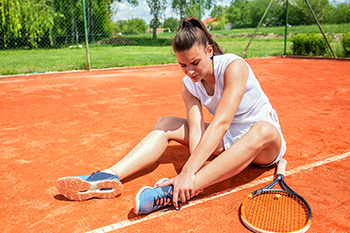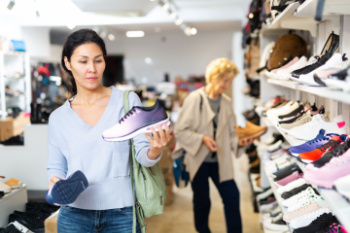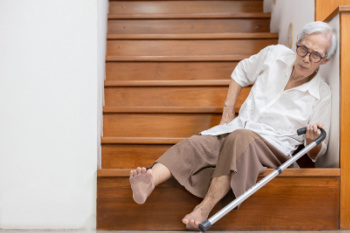March 2024
Tennis and Foot Cramps

Playing tennis is not only a great way to stay active but also a test of endurance and agility. However, foot muscle cramps can unexpectedly disrupt your game and cause discomfort. These cramps, often attributed to overuse, dehydration, or inadequate stretching, can occur in various foot muscles, including the arches, toes, and calves. The repetitive movements involved in tennis, such as sudden stops, pivots, and quick changes in direction, can strain the foot muscles, leading to cramping. Insufficient hydration and electrolyte imbalances can contribute to muscle cramps during intense physical activity. It is important to stay hydrated, maintain proper nutrition, and incorporate regular stretching and warm-up exercises into your routine while playing Tennis frequently. Wearing supportive footwear and orthotic inserts can also help alleviate strain on the foot muscles. By understanding the factors contributing to foot muscle cramps and implementing preventive measures, you can enjoy a more comfortable and uninterrupted tennis experience while safeguarding your foot health. If you enjoy playing tennis and have developed foot cramps, it is suggested that you consult a podiatrist.
Sports related foot and ankle injuries require proper treatment before players can go back to their regular routines. For more information, contact the podiatrists of New England Family Foot Care. Our doctors can provide the care you need to keep you pain-free and on your feet.
Sports Related Foot and Ankle Injuries
Foot and ankle injuries are a common occurrence when it comes to athletes of any sport. While many athletes dismiss the initial aches and pains, the truth is that ignoring potential foot and ankle injuries can lead to serious problems. As athletes continue to place pressure and strain the area further, a mild injury can turn into something as serious as a rupture and may lead to a permanent disability. There are many factors that contribute to sports related foot and ankle injuries, which include failure to warm up properly, not providing support or wearing bad footwear. Common injuries and conditions athletes face, including:
- Plantar Fasciitis
- Plantar Fasciosis
- Achilles Tendinitis
- Achilles Tendon Rupture
- Ankle Sprains
Sports related injuries are commonly treated using the RICE method. This includes rest, applying ice to the injured area, compression and elevating the ankle. More serious sprains and injuries may require surgery, which could include arthroscopic and reconstructive surgery. Rehabilitation and therapy may also be required in order to get any recovering athlete to become fully functional again. Any unusual aches and pains an athlete sustains must be evaluated by a licensed, reputable medical professional.
If you have any questions please feel free to contact our office located in Milton, MA . We offer the newest diagnostic and treatment technologies for all your foot and ankle needs.
The Significance of Shoe Size in Shoe and Foot Care

Shoe size plays a pivotal role in both shoe comfort and foot health. Wearing ill-fitting shoes can lead to a multitude of foot problems, ranging from blisters and calluses to more severe issues, like bunions and hammertoes. When shoes are too tight, they can constrict blood flow and cause discomfort, while overly loose shoes may lead to friction and instability, increasing the risk of injury. Properly fitting shoes should have enough room for the toes to wiggle comfortably without being too loose in the heel or arch. As feet can change in size over time, due to factors such as weight gain, pregnancy, and aging, it is essential to regularly measure shoe size to ensure optimal fit and support. Investing in shoes that accommodate the unique shape and size of your feet can help prevent foot pain and deformities, promoting overall foot health and well-being. By prioritizing shoe size in shoe selection, individuals can enjoy greater comfort, mobility, and longevity in their footwear choices. If you have questions about correct shoe size and how it relates to foot health, it is suggested that you visit a podiatrist.
It is important to find shoes that fit you properly in order to avoid a variety of different foot problems. For more information about treatment, contact the podiatrists from New England Family Foot Care. Our doctors will treat your foot and ankle needs.
Proper Shoe Fitting
Shoes have many different functions. They cushion our body weight, protect our feet, and allow us to safely play sports. You should always make sure that the shoes you wear fit you properly in order to avoid injuries and deformities such as: bunions, corns, calluses, hammertoes, plantar fasciitis, stress fractures, and more. It is important to note that although a certain pair of shoes might be a great fit for someone else, that doesn’t mean they will be a great fit for you. This is why you should always try on shoes before buying them to make sure they are worth the investment. Typically, shoes need to be replaced ever six months to one year of regular use.
Tips for Proper Shoe Fitting
- Select a shoe that is shaped like your foot
- Don’t buy shoes that fit too tight, expecting them to stretch to fit
- Make sure there is enough space (3/8” to ½”) for your longest toe at the end of each shoe when you are standing up
- Walk in the shoes to make sure they fit and feel right
- Don’t select shoes by the size marked inside the shoe, but by how the shoe fits your foot
The shoes you buy should always feel as good as they look. Shoes that fit properly will last longer, feel better, and improve your way of life each day.
If you have any questions, please feel free to contact our office located in Milton, MA . We offer the newest diagnostic and treatment technologies for all your foot care needs.
Preventing Falls and Home Safety for Seniors

People can injure their feet from falling, and ensuring a safe home environment is important for seniors to maintain independence and prevent falls. Simple modifications and precautions can significantly reduce the risk of falls in the home. Start by removing tripping hazards such as loose rugs, clutter, and electrical cords from pathways. Install handrails and grab bars in key areas such as bathrooms, staircases, and hallways to provide stability and support. Improve lighting throughout the home, especially in dimly lit areas, to enhance visibility and reduce the risk of missteps. Consider adding non-slip mats or strips in the bathroom and shower to prevent slips and falls on wet surfaces. Regularly check and maintain the condition of stairs, handrails, and flooring to address any potential hazards promptly. By implementing these practical falls prevention methods, seniors can create a safer living environment. If you are seeking additional fall prevention techniques, it is suggested that you consult a podiatrist who can provide you with education about protecting the feet from falling.
Preventing falls among the elderly is very important. If you are older and have fallen or fear that you are prone to falling, consult with the podiatrists from New England Family Foot Care. Our doctors will assess your condition and provide you with quality advice and care.
Every 11 seconds, an elderly American is being treated in an emergency room for a fall related injury. Falls are the leading cause of head and hip injuries for those 65 and older. Due to decreases in strength, balance, senses, and lack of awareness, elderly persons are very susceptible to falling. Thankfully, there are a number of things older persons can do to prevent falls.
How to Prevent Falls
Some effective methods that older persons can do to prevent falls include:
- Enrolling in strength and balance exercise program to increase balance and strength
- Periodically having your sight and hearing checked
- Discuss any medications you have with a doctor to see if it increases the risk of falling
- Clearing the house of falling hazards and installing devices like grab bars and railings
- Utilizing a walker or cane
- Wearing shoes that provide good support and cushioning
- Talking to family members about falling and increasing awareness
Falling can be a traumatic and embarrassing experience for elderly persons; this can make them less willing to leave the house, and less willing to talk to someone about their fears of falling. Doing such things, however, will increase the likelihood of tripping or losing one’s balance. Knowing the causes of falling and how to prevent them is the best way to mitigate the risk of serious injury.
If you have any questions, please feel free to contact our office located in Milton, MA . We offer the newest diagnostic and treatment technologies for all your foot care needs.
Wounds That Don't Heal Need to Be Checked
Foods That Can Trigger Gout

Gout, a form of inflammatory arthritis, is often triggered by certain foods high in purines, which are natural compounds found in various food sources. Purines break down into uric acid in the body. When uric acid levels become elevated, it can lead to the formation of urate crystals in the joints, like the big toe, and cause gout flare-ups. Foods rich in purines include red meat, organ meats like liver and kidneys, shellfish, and certain types of fish like anchovies and sardines. Additionally, alcohol, particularly beer and liquor, can increase uric acid levels and trigger gout attacks. Sugary beverages and foods high in fructose can also contribute to gout symptoms. Limiting consumption of these purine-rich foods and beverages, and focusing on a balanced diet that includes plenty of fruits, vegetables, whole grains, and low-fat dairy products, can help manage gout symptoms and reduce the frequency of flare-ups. If you have gout attacks in your big toe, it is suggested that you consult a podiatrist who can help you to manage this condition, which may include effective nutritional recommendations.
Gout is a foot condition that requires certain treatment and care. If you are seeking treatment, contact the podiatrists from New England Family Foot Care. Our doctors will treat your foot and ankle needs.
What Is Gout?
Gout is a type of arthritis caused by a buildup of uric acid in the bloodstream. It often develops in the foot, especially the big toe area, although it can manifest in other parts of the body as well. Gout can make walking and standing very painful and is especially common in diabetics and the obese.
People typically get gout because of a poor diet. Genetic predisposition is also a factor. The children of parents who have had gout frequently have a chance of developing it themselves.
Gout can easily be identified by redness and inflammation of the big toe and the surrounding areas of the foot. Other symptoms include extreme fatigue, joint pain, and running high fevers. Sometimes corticosteroid drugs can be prescribed to treat gout, but the best way to combat this disease is to get more exercise and eat a better diet.
If you have any questions please feel free to contact our office located in Milton, MA . We offer the newest diagnostic and treatment technologies for all your foot and ankle needs.









